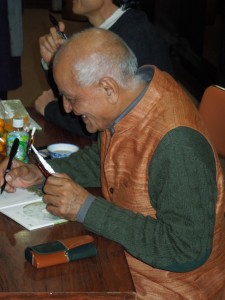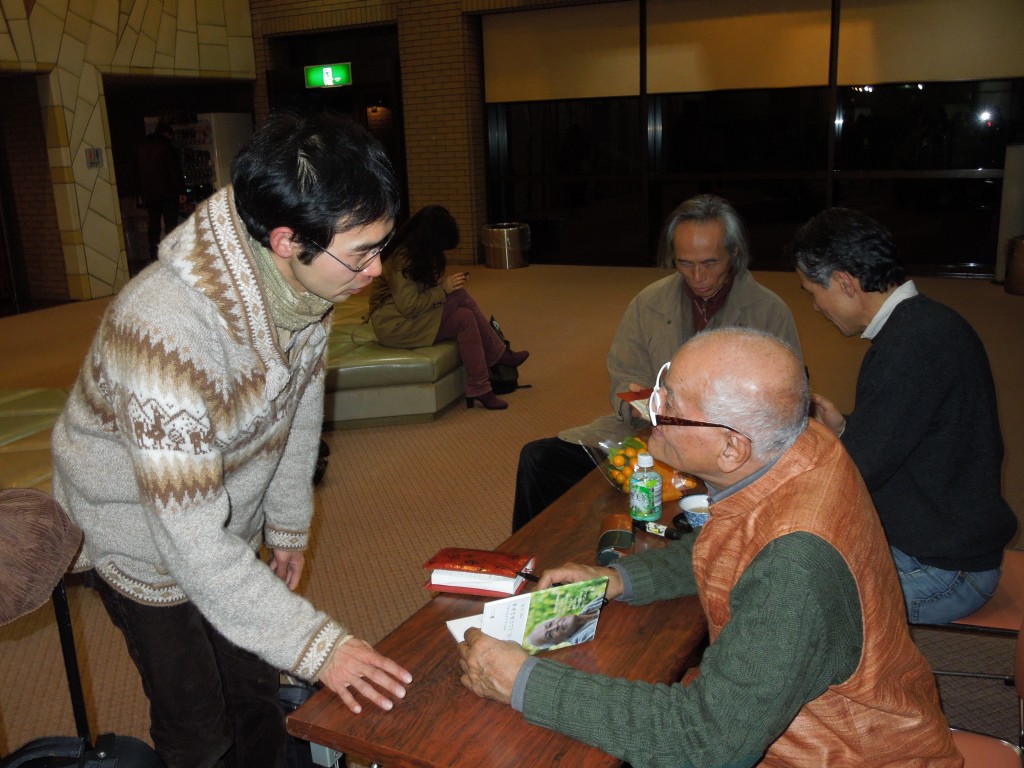
Satish Kumar, eco-activist and editor of Resurgence
This evening I went to a talk by Satish Kumar, whose magazine Resurgence I used to subscribe to in the 1970s… ah, those heady days of youthful idealism! Unlike others, Satish still keeps the faith and continues to proclaim a message of eco-spirituality to all who will listen.
Born in India, he joined the peace movement and walked over 8000 miles for two and a half years as part of an anti-nuclear campaign. He has been a Jain monk as well as a founder and teacher at Schumacher College in Devon dedicated to holistic science and ecology.
Change yourself, change the world
In Japan Satish has quite a following, and over 300 people were packed into the hall to watch a film and listen to him talk. He spoke of the need to rethink the way we are living in order to have a more balanced, wholesome and fulfilling lifestyle in harmony with nature.
‘Become the change that you want to happen,’ was his central message, and one practical step he advised was to begin by looking at the meals you eat. If the food there was healthy, local, free of cruelty and chemicals, then it was good for you and good for the planet.
During the question time one of the many Japanese who queued up to ask was a young man training to be a Shinto priest. How could communities get control of their lives, he wondered?
By way of answer, Satish Kumar first of all spoke of Shinto as a ‘nature religion’ and its potential in meeting the needs of the age. He then suggested that Switzerland provided a model democracy in the sense that power was located close to the grassroots while the central authority was relatively weak. Could anyone name the Swiss president? The answer, unsurprisingly, was no, and this was because in Satish’s opinion the president was relatively unimportant. Swiss cantons were more or less self-governing.
Harnessing the power of youth
In response to another question about Japanese youth, Satish responded by saying that as a nation people here generally had less ego than other countries, which was good. Yet while the humility was admirable, the tendency to passivity was a danger and young Japanese needed to be more active in fostering change. For example, the Japanese flag carried an image of the sun, and sun power, not nuclear power, should be the demand of its people. This brought a round of applause.
Afterwards I got to chat with the budding priest, who is about to obtain his licence from Kogakkan University before heading off to work at a shrine in Kumano. His interest in alternative lifestyles and environmental matters was clearly taking him in a direction different to the conventional Shinto priest, and we agreed that there may be a generational shift taking place. He hopes to visit Schumacher College in Devon, which may well put him in the vanguard of the green movement in Japan.
It was an inspiring evening. Those waves of energy from the 1970s seemed to be lapping at the shores of contemporary Japan, and I came away from the meeting with a sense of renewed hope for the future. Soil – soul – society was Satish’s motto for change. Could Shinto not add to it another ‘s’ ?

A future priest takes advice from an eco-veteran
For more about Satish Kumar and Resurgence, please see http://www.resurgence.org/satish-kumar/

Leave a Reply